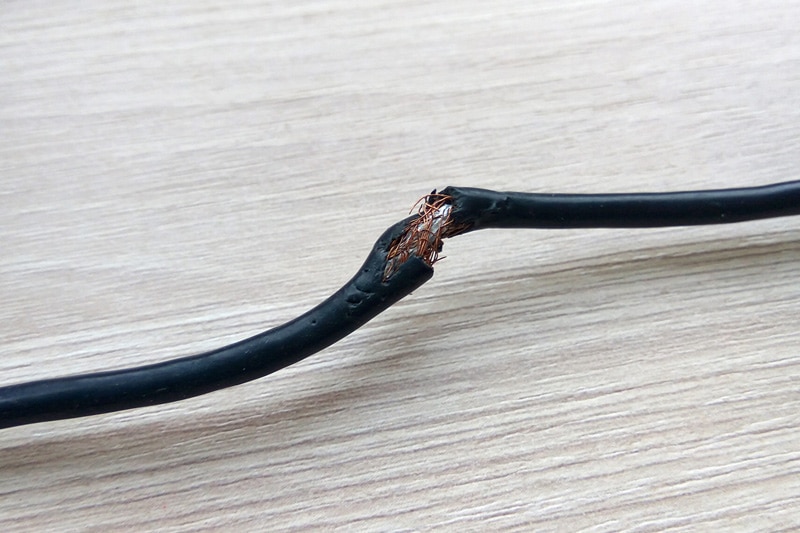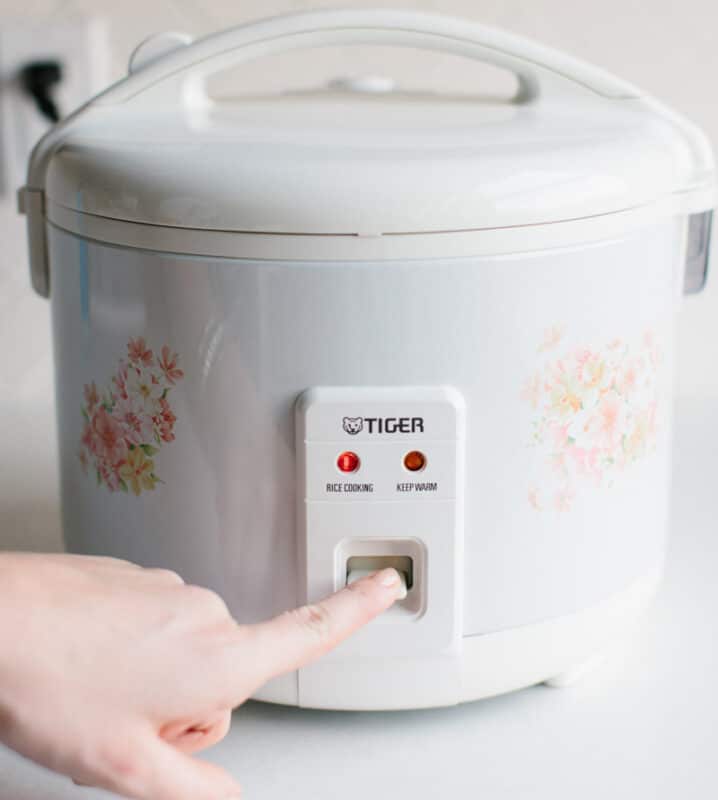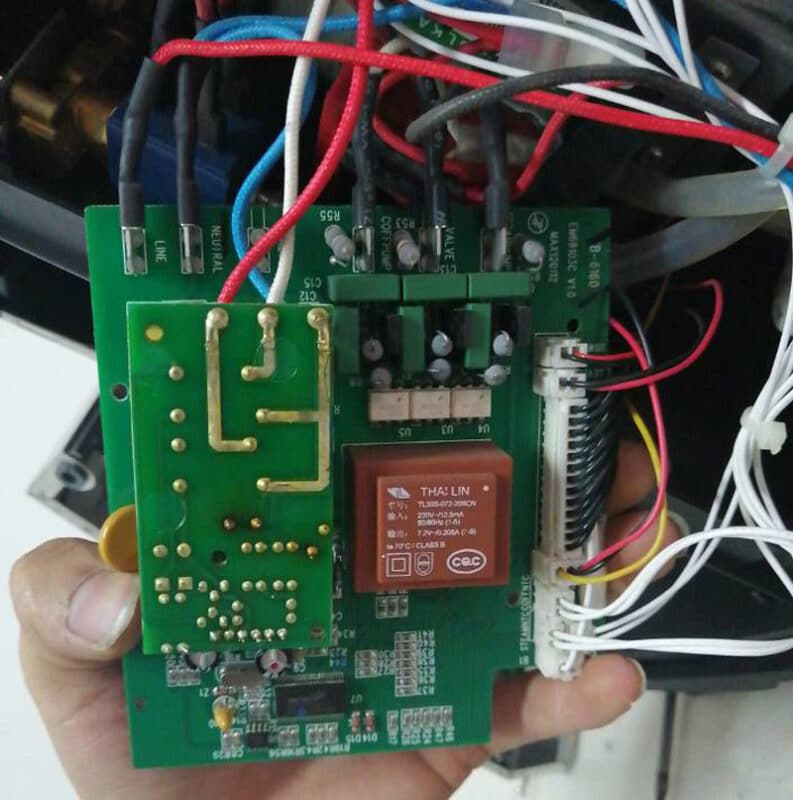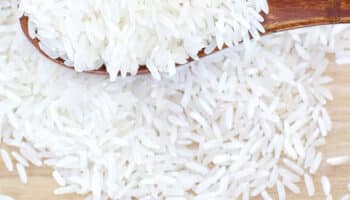Does your rice cooker keep switching to warm? Your relay might need urgent replacing. Here are 5 possible reasons why.
Rice cookers are a true godsend. Whether you’re a busy professional who’s always on the run or someone who simply enjoys eating a nice rice bowl every day, you know how useful these machines are.
While I wouldn’t go as far as to call them a necessity, they’re definitely great at preparing the perfect rice and freeing up a big part of your cooking schedule. Especially when compared to the regular pot and boiling water alternatively.
Now, before you close this page because you think I’m trying to sell you on a new model, wait. I promise I’m not. If you’re here reading this, you already own one, and it’s giving you a lot of trouble by switching to warm prematurely.
Why is this happening?
Well, there are numerous explanations for your unfortunate situation. From something as unimportant as a damaged power cord, to much more concerning issues, like a faulty component that could even be putting your appliance at risk of permanent damage.
In order to pinpoint, and fix the right problem, you need to have a very clear idea of what you should be looking out for.
This is why I’ve prepared the list below, where you’ll find the most common causes of this occurrence, and the simplest steps you can take to address them. Bear with me, and be patient. I’m sure we’ll get everything back to normal in a jiffy.
Ready? Let’s go!
Fixing a Malfunctioning Rice Cooker
Hey, I get it, you’re eager to fix your machine and get back to cooking delicious batches of rice, it’s totally understandable. However, letting your emotions get the best of you is the easiest way to waste precious time, money, and risk doing further damage to your unit.
Your rice cooker might keep switching to warm due to:
- A damaged power cord
- A broken relay
- A malfunctioning switch
- A faulty thermostat
- A fried circuit board
#1 A Damaged Power Cord

First, I want us to consider the possibility of there being nothing wrong with your rice cooker. The problem could come from an external factor, like the power cord.
While this cable looks thick and sturdy from the outside, you must remember that, inside it, there are several smaller cables that can be very easily broken.
I’m not saying that using your appliance regularly will damage it, but seemingly negligible bad practices, such as storing it away improperly, keeping it tangled or pressed against an object at a weird angle, are more than enough to do it in.
Depending on the severity of the damage, your rice cooker might not even turn on, but it is only partial, it could be supplying intermittent power to it, thus causing it to switch to warm mode prematurely.
As soon as you suspect this to be the issue, please stop using your machine immediately, as a partially broken cable could cause short-circuiting, and fry the cooker’s circuit board.
Solution: Try a new cable.
I know you probably don’t have a spare one for testing just lying around, but on the off chance that you do, you can go ahead and use it. This will both save you time, and money, as well as provide you with an immediate answer.
Just make sure it meets the same voltage and amperage requirements as the broken one. You don’t want to do more damage.
Provided that you don’t have another cable, that is fine too. You can easily find a replacement at any online marketplace by Google searching your rice cooker’s make and model.
#2 A Broken Relay
Provided that your power sources are unscathed, we can safely consider the possibility of a damaged relay.
As you probably know, this component is responsible for detecting when your rice is ready by sensing the temperature inside the pot and switching the appliance to warm mode when it detects it has reached uniform levels of heat; a clear indicator of cooked rice.
When it fails, its temperature detection abilities are compromised, causing the cooking cycle to end early, and switching to warm mode before the rice is fully cooked.
Who would have thought, such as seemingly unimportant part could cause so much trouble, huh?
Solution: In order to fix this, you’ll have to go in. Please follow these steps:
- Carefully unplug your unit, and let it cool down
- Remove any water or rice in the pot
- Turn the appliance upside down, and locate the screws at the bottom
- Undo them with a screwdriver
- Remove the outer plastic panel, and expose the appliance’s guts
- Locate the relay (it should look like a circle right in the middle of the pot)
- Carefully detach it from the machine’s body, and remove the spring under it
- Press the spring back down to its original length of 5 mm
What does spring length have to do with a properly functioning relay? The answer is simple.
As time passes by, the spring beneath the relay can expand, rendering the component less sensitive to heat, and making it hard for it to communicate with the other internal components.
By pressing it back down to its original length, temperature detection is improved.
#3 A Malfunctioning Switch

If both your relay and your power cord turned out to be fine, a switch could be to blame.
This is not true for all models, but most of them are controlled by a dial knob at the front of the appliance. Behind this external control, there is a switch that receives your inputs, and switches from “cooking mode”, to “warm mode”.
When this part fails in any way, it could be triggering false alarms, and cause the machine to turn to warm mode prematurely.
Solution: Please follow the steps from the previous point to open your rice cooker and access its internal components. The controlling switch should be right behind the external dial knob.
Once you gain comfortable access to this part, you can use a multimeter (if you have one), to test it for continuity. If the meter reads anything above “0”, the switch is fine, but if there are no readings, it means it’s dead, and needs replacing.
If you’re a visual person like me, there are tons of online videos you can check out and follow along step by step to repair this component.
#4 A Faulty Thermostat
Your rice cooker is all about temperature regulation, so having the part that both detects, and controls it, can be catastrophic.
The appliance’s thermostat is solely responsible for making sure that the temperature inside the machine never reaches dangerously high levels.
As opposed to the relay, this part is much more closely related to your unit’s internal components, than it is to the rice it cooks.
If your rice cooker keeps switching to warm, chances are this component has already failed, causing overheating. This event might be responsible for blowing your thermal fuse, damaging your switch, and maybe even killing your appliance.
Solution: Please follow the steps from point #2 to access your cooker’s guts and test the thermostat for viability with a multimeter.
It is strongly advised to keep operating your rice cooker until the part has been replaced.
#5 Your Circuit Board Is Fried

If even after implementing all the solutions above, your rice cooker keeps switching to warm, I’m sorry to say that your circuit board is most likely fried.
This part is your appliance’s heart and brain. Without it, it cannot process any of your inputs or go about doing its normal processes. Your circuit board could have been damaged by either a large power spike, or extremely high temperatures inside the unit.
In theory, a fried circuit board should make it impossible to operate your appliance, but if the damage is only partial, you could be experiencing a number of issues during the machine’s intermittent functioning.
Solution: You can definitely try to get a new circuit board to install inside your rice cooker, but this is only encouraged under certain warranty circumstances, which you’ll find below .
When Should You Look at Your Warranty?
The answer to this question will depend greatly on both the status of your warranty, and how much you paid for the rice cooker.
If you’re still under coverage, and don’t mind waiting a couple of weeks to have the repaired appliance returned to you by your manufacturer, by all means, go ahead and call them.
Unless specified otherwise, they should fix it for free.
Provided that your warranty is expired, you’ll have to weigh the cost of repairs vs the cost of buying a new model. Rice cooker circuit boards are not awfully expensive, but the cost of labor to have them installed, and set up, can be.
Conclusion
To have your rice cooker keep switching to warm can be extremely inconvenient. Not only are you stuck without rice, but also in the annoying need to find a solution to the problem.
Disastrous!
Luckily, as I hope you’ve learned from this piece, addressing most of the causes behind this issue is not too complicated or time-consuming. In 99% of cases, replacing a damaged power cord or a faulty switch is more than enough to get the appliance back to normal.
Trust in yourself and in your DIY skills. I know there’s nothing you can’t do if you set your mind to it.
Thank you so much for reading. If you liked this article and want to kill some time while learning something new, why not check out our other incredible resources below?
Bon Appétit!







